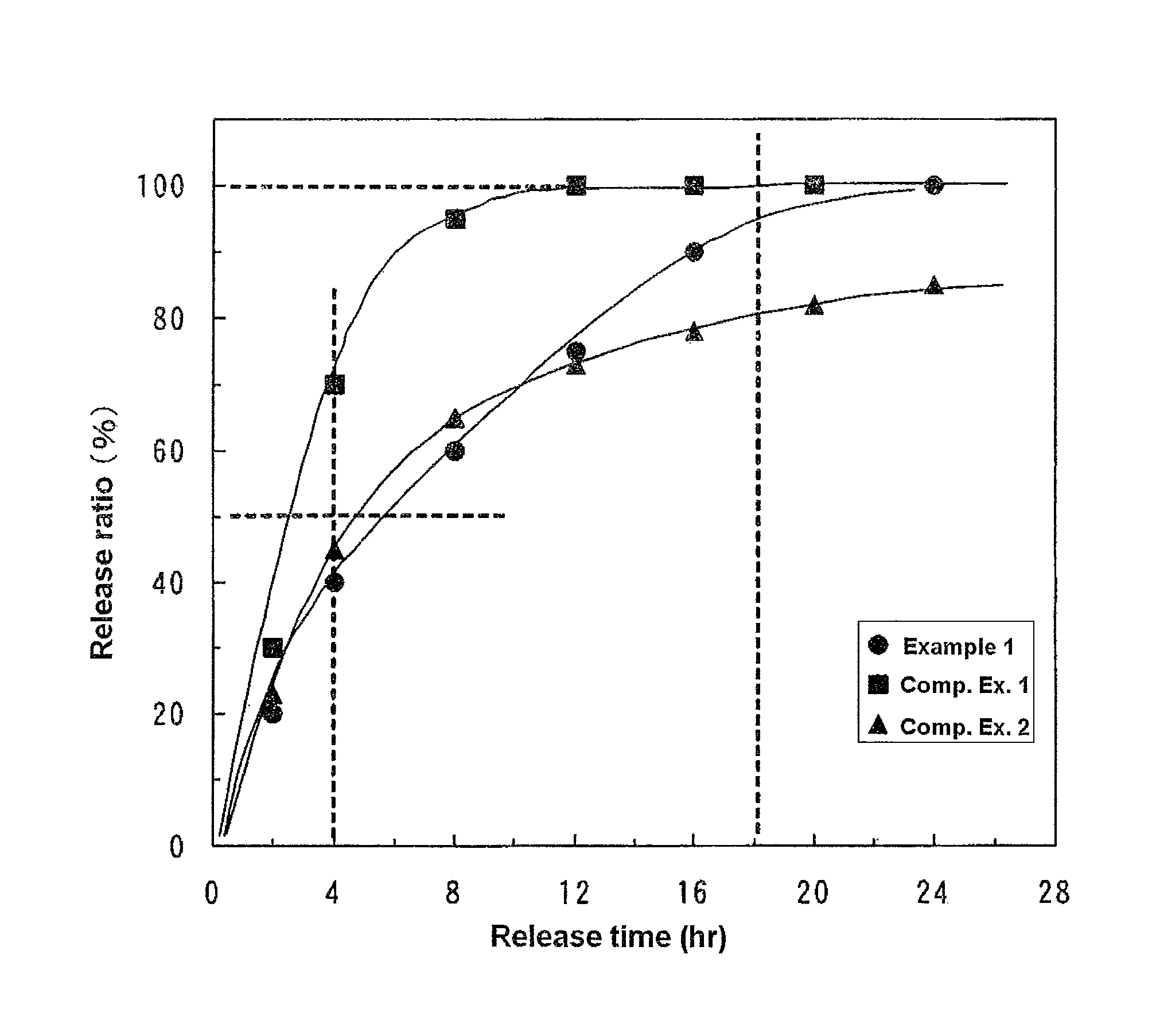Hydrogel contact lens for sustained drug release and drug release method using hydrogel contact lens for sustained drug release
a technology drug release method, which is applied in the field of hydrogel contact lens for sustained drug release and drug release method using the hydro, can solve the problems of inability to provide remarkable therapeutic effects, inability to satisfactorily alleviate, and inability to prevent the administration of seasonal allergy drugs in the form of eye drops, so as to improve the eye health and improve the effect of eye health, the effect of effective release of therapeutic drug doses
- Summary
- Abstract
- Description
- Claims
- Application Information
AI Technical Summary
Benefits of technology
Problems solved by technology
Method used
Image
Examples
example 1
[0050]2-hydroxyethyl methacrylate (HEMA) (46.2 g: 0.35 mol), 2-hydroxypropyl methacrylate (HPMA) (37.6 g; 0.26 mol), methacrylamide propyl trimethyl ammonium chloride (MAPTAC) (12.2 g; 0.055 mol), methacryloxyethyl succinic acid (MOESA) (3.2 g; 0.013 mol), ethyleneglycoldimethacrylate (EDMA) (0.8 g; 0.004 mol) and azo-bis-isobutylonitril (AIBN) 3000 ppm (external) were mixed to the ratio shown in Table 1 and agitated for about 1 hour, while being sufficiently subjected to nitrogen substitution. After the agitation, the monomer mixture solution was put into a contact lens forming mold and the temperature thereof was raised within a range of 50 to 100° C. for 24 hours to obtain a polymer. The obtained polymer was cooled to room temperature and taken out from the mold. Then, the polymer was immersed in distilled water at about 60° C. for about 4 hours so as to become hydrated and swollen. The contact lens was treated to contain sodium cromoglycate (DSCG) by immersing the contact lens i...
example 2
[0051]HEMA (46.2 g; 0.35 mol) HPMA (37.6 g; 0.26 mol), MAPTAC (12.9 g; 0.058 mol), MOESA (2.5 g; 0.011 mol), EDMA (0.8 g; 0.004 mol) and AIBN 3000 ppm (external) were mixed to the ratio shown in Table 1 and agitated for about 1 hour, while being satisfactorily subjected to nitrogen substitution. After the agitation, the mixture was polymerized, hydrated and swollen, and treated to contain sodium cromoglycate as in Example 1.
example 3
[0052]HEMA (46.2 g; 0.35 mol), HPMA (37.6 g; 0.26 mol), MAPTAC (13.3 g; 0.060 mol), MOESA (2.1 g; 0.009 mol), EDMA (0.8 g; 0.004 mol) and AIBN 3000 ppm (external) were mixed to the ratio shown in Table 1 and agitated for about 1 hour, while being satisfactorily subjected to nitrogen substitution. After the agitation, the mixture was polymerized, hydrated and swollen, and treated to contain sodium cromoglycate as in Example 1.
PUM
| Property | Measurement | Unit |
|---|---|---|
| time | aaaaa | aaaaa |
| mol % | aaaaa | aaaaa |
| mol % | aaaaa | aaaaa |
Abstract
Description
Claims
Application Information
 Login to View More
Login to View More - R&D
- Intellectual Property
- Life Sciences
- Materials
- Tech Scout
- Unparalleled Data Quality
- Higher Quality Content
- 60% Fewer Hallucinations
Browse by: Latest US Patents, China's latest patents, Technical Efficacy Thesaurus, Application Domain, Technology Topic, Popular Technical Reports.
© 2025 PatSnap. All rights reserved.Legal|Privacy policy|Modern Slavery Act Transparency Statement|Sitemap|About US| Contact US: help@patsnap.com

